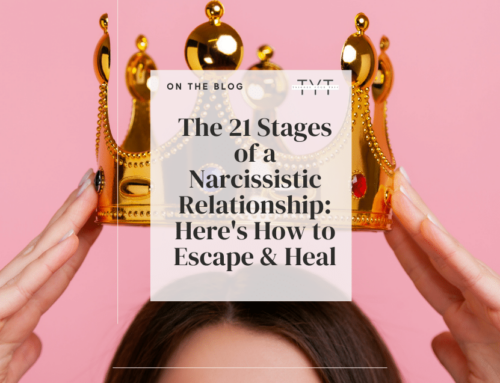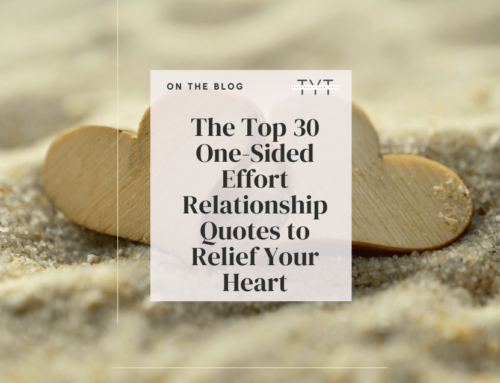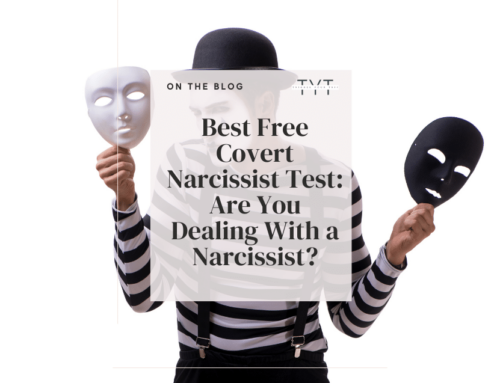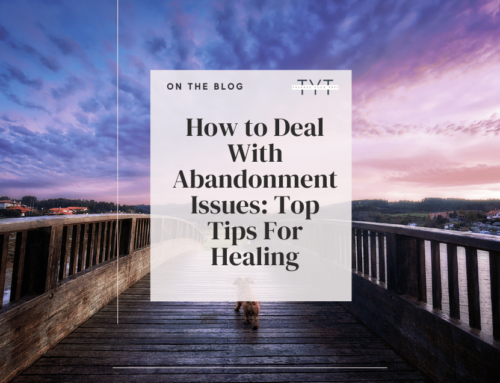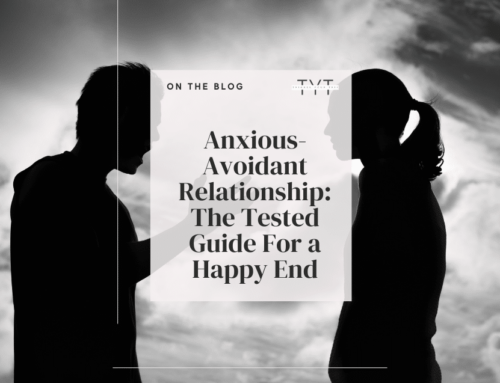After a few months in Singapore, I had recently started dating again, and the more I was observing myself, the more I noticed a pattern. I still remember the day I sat in my favorite corner of a coffee shop in my new city, noticing my heart racing and my palms growing clammy as I watched my phone with a mixture of hope and apprehension. I didn’t realize back then that this uncertainty was one of the various anxious attachment triggers that made my heart pound.
I was waiting for a text response, but that message was a catalyst for a torrent of emotions for someone with an anxious attachment style like mine. Navigating relationships had always been a rollercoaster, with seemingly innocuous situations sparking overwhelming doubts and fears -but it wasn’t until my mid-20s that I discovered how anxious attachment played its part in all my relationship troubles.
Through my journey of self-discovery, therapy, and finally, relationship coaching, I’ve learned to identify the most common triggers that send my attachment anxiety into overdrive and, more importantly, how to regain control and foster healthier connections. Now, I’m here to guide my clients (and readers like you) on handling the most common anxious attachment triggers -whether you’re suffering yourself or involved with someone with an anxious attachment.
Do you have difficulty choosing a mental health professional? Can’t afford in-person couples or individual therapy?
This online therapy toolbox is more efficient and affordable than any other virtual therapy I’ve tried, including BetterHelp and Talkspace. It instantly matches you with a therapist and saves you hours of research for the right one (with unlimited daily messaging and support from your therapist). By leveraging the power of CBT (Cognitive Behavioral Therapy) -the most common psychotherapeutic approach for treating mental health problems- your therapist will guide you to a happier self through weekly sections, CBT worksheets, unlimited messaging, and daily worksheet replies. Bonus price for the fact that you can do your sessions wherever you are in the world and message your therapist anytime, daily.
The Various Attachment Styles & Attachment Theory
At its core, attachment theory is like a psychological roadmap for how we connect and bond with the people around us. Imagine it as the hidden forces that shape our relationships, stemming from our earliest interactions, usually with our parents or primary caregivers. These experiences imprint on our emotional wiring, resulting in different attachment styles.
Think of it this way: There are four attachment styles. First up is “secure,” which is like having a reliable GPS for relationships. People with a secure attachment style feel comfortable getting close and depending on others while maintaining independence.
Then comes “anxious,” where the emotional rollercoaster never truly stops. Those with an anxious attachment often worry about abandonment, seeking constant reassurance and fearing rejection.
Conversely, we have those with an avoidant attachment (dismissive-avoidant) – someone who believes emotional self-sufficiency is critical, avoiding getting too attached to prevent potential heartbreak.
Last but not least, there’s the “disorganized” style (fearful-avoidant), which is a bit like having a GPS that sometimes leads you astray, often seeking reassurance but avoiding getting too close. This style stems from inconsistent or traumatic early experiences, resulting in a mix of anxious and avoidant behaviors.
These attachment styles aren’t set in stone but more like tendencies that can evolve with time and personal growth. Recognizing your style and understanding others’ can be a game-changer.
It’s like having a decoder for why you react the way you do in relationships. Armed with this knowledge, you can build healthier, more fulfilling connections.
How Does Anxious Attachment Style Develop
Anxious attachment style typically develops from early childhood experiences, where a person’s caregivers might have inconsistently met their emotional needs.
Children who experience periods of both nurturing and neglect can become unsure about the availability of love and support. This uncertainty, which stems from inconsistent parenting, can lead to a heightened sensitivity to any changes in relationships, making individuals with an anxious attachment style prone to seeking constant reassurance and fearing abandonment.
These tendencies can persist into adulthood, causing their “inner child” to crave intimacy intensely and fear rejection. The development of anxious attachment style is deeply rooted in the need for security and connection, which wasn’t consistently fulfilled during their formative years.
Anxious attachment style often influences adult relationships, as an anxiously attached person might overthink interactions, worry about their partner’s feelings, and grapple with self-doubt.
Related: Emotional Permanence Explained & 5 Top Tips on How to Cope
Why Do I Suddenly Have an Anxious Attachment Style?
Here are some reasons that could contribute to someone suddenly becoming more anxious and becoming an anxiously attached person:
Traumatic Experience: A sudden traumatic event, such as a breakup, loss of a loved one, or personal crisis, can trigger insecurity and fear, leading to an increased need for reassurance and attachment.
Relationship Instability: Entering a new relationship or experiencing turmoil within an existing one can evoke feelings of uncertainty and anxiety, especially if there’s a lack of consistent emotional support.
Perceived Rejection: Even subtle rejection signals, like perceived distance from a partner or a friend, can activate underlying insecurities and amplify anxious tendencies.
Life Transitions: Major life changes, such as moving to a new place, changing jobs, or entering a different life stage, can disrupt one’s sense of stability, prompting anxious feelings and attachment-seeking behavior.
Abandonment History: If someone has a history of abandonment or neglect, any situation resembling those experiences can trigger intense anxiety and the desire to overcompensate for fear of being left alone.
Attachment Figure’s Behavior: A change in behavior of a significant attachment figure, like a parent or partner, towards emotional distance or inconsistency can activate anxieties about losing their support.
External Pressure: Societal or cultural pressures emphasizing the importance of relationships and the fear of being alone might prompt someone to develop anxious tendencies.
Low Self-Esteem: Individuals with low self-esteem might suddenly become more anxious if they perceive themselves as unworthy of love and fear rejection.
Dependency: Becoming overly dependent on a specific relationship for emotional well-being can intensify attachment anxieties, particularly if that relationship becomes strained.
Unresolved Past Issues: Past emotional wounds or unresolved issues, such as childhood traumas or unresolved conflicts, can resurface and contribute to heightened anxiety in relationships.
Remember that developing an anxious attachment style is complex and can result from combining these factors, often interacting uniquely for each individual.
Read More: How Hyper-Independence Can Signify Trauma (& 5 Ways To Cope)
Are People With Anxious Attachment Style Manipulative?
People with an anxious attachment style are not inherently manipulative. Still, their behavior can sometimes come across as manipulative due to their heightened sensitivity to relationship dynamics and their fear of abandonment.
Anxious attachment style is characterized by a strong desire for closeness and reassurance, which can lead individuals to engage in certain behaviors that, unintentionally, might be perceived as manipulative.
Understanding the underlying motivations and fears that drive these behaviors is essential, rather than labeling yourself or your anxious partner as manipulative.
Some behaviors associated with anxious attachment style that might be misconstrued as manipulative include:
- Seeking Reassurance: Anxious individuals might repeatedly seek validation and reassurance from their partners or friends by trying to fish for compliments. This can be mistaken for manipulative behavior when it seems excessive or demanding or when the anxious person turns bitter by not hearing what they expected.
- Overanalyzing: Anxious individuals tend to overthink and analyze every aspect of their relationships, which could be interpreted as an attempt to control or manipulate situations by altering words or distorting facts.
- Emotional Reactivity: Anxious individuals might react strongly to perceived changes in their relationships, which can sometimes create pressure on others to accommodate their emotional needs.
- Threatening to leave: Without meaning it, the anxious person might state that ending the relationship is better, hoping to grab their partner’s attention.
- Testing: In moments of insecurity, someone with an anxious attachment style might unintentionally test their partner’s commitment or affection, seeking proof of their love.
- Guilting: Anxious individuals might express their fears and anxieties in ways that unintentionally make their partners or friends feel guilty, which can sometimes be perceived as manipulative.
It’s essential to approach these behaviors with empathy and understanding. An anxious person is often struggling with emotional vulnerabilities and fears of rejection.
People with anxious attachment styles are not trying to manipulate but rather attempt to navigate their anxieties within relationships. Building open communication, understanding what triggers anxious attachment, and fostering a secure environment can help mitigate misunderstandings and allow for healthier interactions.
Read More: Narcissist Hoovering: 8 Behavior Examples With Best Responses
What Triggers An Anxiously Attached Person?
Here are the most common anxious attachment triggers:
Inconsistency or uncertainty
Mixed signals can cause inconsistency or uncertainty in relationships and can activate anxious attachment by amplifying fears of abandonment. When emotional support becomes unpredictable, individuals with this attachment style seek reassurance and closeness to alleviate anxiety, reinforcing their dependence on others for a sense of security.
Distance (physical or emotional)
Distance was probably one of the main reasons I couldn’t feel safe with my partner, no matter what (despite him also having an avoidant attachment style). Emotional or physical distance triggers anxious attachment by evoking insecurity (Where is he? What is he doing? Is he thinking of me?) and fear of rejection (he might find someone more exciting and available). The perceived disconnect intensifies the need for reassurance and closeness, as anxiously attached individuals fear being left alone, prompting efforts to restore emotional connection and validate their worth.
Read more: What Kills Long Distance Relationships? (And How to Make It Work)
Emotionally unavailable behaviors
Emotionally unavailable behaviors, like distancing or aloofness, trigger anxious attachment by igniting fears of abandonment and rejection in intimate relationships. Individuals with an avoidant attachment style exhibit such behaviors due to their discomfort with intimacy. Their actions activate anxious responses and trigger anxiously attached people, as their partner’s withdrawal mirrors the emotional unavailability that anxious individuals fear, intensifying their attachment-seeking tendencies.
When a partner forgets important events
When a partner forgets important events, it triggers anxious attachment and fuels fears of being undervalued or forgotten. Anxious individuals already seek reassurance, and such lapses reinforce their worries, prompting them to seek validation and closeness to alleviate anxiety and validate their significance.
Not calling or texting back when anticipated
Not receiving expected calls or texts triggers anxious attachment by stirring fears of rejection and abandonment (they don’t reply on time because they don’t like me). The delay fuels uncertainty, prompting anxious individuals to seek connection and confirmation as they interpret the unresponsiveness as a sign of potential detachment, intensifying their need for reassurance.
A partner having an active social life, going out often, or coming home late
A partner’s active social life, frequent outings, or late returns trigger anxious attachment by fostering feelings of insecurity and fear of being replaced. These actions can evoke concerns of neglect or reduced importance, prompting anxious individuals to seek reassurance and closeness to alleviate worries about their partner’s emotional distance and maintain their sense of connection.
Low self-confidence
Low self-confidence can trigger anxious attachment by making individuals doubt their worthiness of love. This leads to seeking constant reassurance and validation from partners, fearing rejection and abandonment. The anxiety stems from an underlying belief that they are inadequate, intensifying the need for emotional closeness to alleviate their insecurities.
Read More: 140 Top Affirmations for Self-Love Help You to Build Confidence
Non-reciprocated reassurance
Non-reciprocated reassurance fuels anxious attachment by confirming negative self-perceptions. When partners don’t validate feelings, it reinforces the fear of being unlovable. Anxious individuals seek constant validation to ease insecurities. Rejection of reassurance enhances the belief that their anxieties are justified, intensifying clinginess and dependency.
Read More: How Much Is Couples Therapy? (With Best Virtual Alternatives)
How Do You Get Through Anxious Attachment Triggers?
Develop healthy self-regulation strategies
Healthy self-regulation for anxiously attached individuals involves cultivating self-awareness, practicing mindfulness to manage overwhelming emotions, setting clear boundaries to avoid overdependence, engaging in hobbies to boost self-esteem, seeking therapy to address underlying issues, and learning effective communication to express needs without clinging.
Date a securely attached person
Dating a person with a secure attachment style benefits anxiously attached individuals by providing consistent emotional support. Secure partners offer reassurance and space, promoting a sense of safety. In contrast with avoidants, people with a secure attachment style feel comfortable with intimacy, foster trust, reduce clinginess, and encourage the anxious person to develop healthier attachment patterns, ultimately improving their overall well-being in relationships.
Read More: The Top 21 Questions For A New Relationship To Develop Intimacy
Learn how to manage emotions and resist dramatic reactions
Anxiously attached individuals can benefit from learning emotional management by recognizing triggers and practicing the self-soothing techniques mentioned above. Resisting dramatic reactions, like excessive jealousy or overly dramatic reactions, enables better communication and reduces strain on relationships. Developing these skills empowers them to engage in healthier interactions and build more secure attachments.
Read More: The Best 25 Journal Prompts For Mental Health to Break Trauma
Do a reality check with a securely attached person in your environment
Engaging in a reality check with securely attached people (either a close friend, family member, or coach) offers perspective to anxiously attached individuals. Secure individuals’ balanced view helps challenge irrational fears, reducing overthinking and impulsiveness. This interaction fosters a sense of emotional stability and encourages the development of more secure attachment behaviors.
Let the emotional wave pass before you react
Allowing the emotional wave to subside before reacting benefits anxiously attached individuals. This pause can be in the form of slow breathing or a mindfulness exercise and can prevent impulsive, fear-driven responses. By giving space for rational thought, they can respond more thoughtfully and calmly, enhancing communication and reducing behaviors rooted in anxiety, thus fostering a healthy relationship.
Spot trigger patterns in your romantic relationships and learn them by hand
Recognizing familiar patterns in romantic relationships can help those with anxiously attached adults gain insight. Identifying triggers and reactions stemming from past experiences allows the anxious person to understand emotional-driven responses better. This self-awareness enables proactive management of anxious tendencies, leading to healthier coping mechanisms and more constructive behaviors in their healthy relationships.
Read More: Trapped in a Narcissistic Relationship Pattern? The 7 Awful Signs
How do I Stop Activating Anxious Attachment?
Educate yourself on anxious attachment (and any other insecure attachment style)
Educating oneself about anxious attachment and other insecure styles offers insight into underlying emotional dynamics. This knowledge fosters self-compassion, encourages seeking appropriate support, and aids in adopting healthier relationship strategies. Understanding the origins of attachment behaviors empowers growth, facilitating more secure and fulfilling connections.
Read More: 5 Books on Attachment Theory Explain Your Obsession Over Certain People
Learn the difference between healthy and unhealthy self-soothing
Distinguishing between healthy and unhealthy self-soothing helps anxiously attached individuals. Unhealthy self-soothing is escapism or addictive behaviors that numb your feelings temporarily, like drinking, overeating, or substance abuse. In contrast, recognizing beneficial strategies like mindfulness or engaging in constructive hobbies promotes emotional regulation. This awareness helps avoid maladaptive coping, like clinging or reassurance-seeking, fostering greater autonomy and resilience in managing their attachment-related anxieties and emotions.
Understand if it’s real love or your anxious attachment style getting you obsessed
I’ve seen anxiously attached people mistaking an activated attachment nervous system as “genuine interest” and “heightened passion.” I used to think, “Okay, my heart is beating, and I’m anxious around him. It must be love.” Yet, differentiating an activated attachment style from genuine infatuation is valuable. Recognizing that heightened anxiety isn’t equivalent to authentic passion and love cultivates realistic expectations in an intimate relationship. This understanding promotes secure self-worth, reduces clinginess, and encourages building relationships based on trust, mutual respect, and emotional reciprocity instead of a pounding heart.
Avoid dating people with an insecure attachment style
Avoiding people with insecure attachment styles benefits those with a generalized anxiety disorder. Partnering with securely attached individuals who offer consistent support can reduce the triggering of anxieties. By sidestepping potential partners with avoidant or ambivalent patterns, they create a conducive environment for healthier attachment dynamics and personal growth within relationships.
Read More: The Most Common Avoidant Attachment Triggers & How to Handle Them
Practice mindfulness, journaling, and other self-care techniques
Practicing mindfulness, journaling, and self-care can help someone with an anxious attachment style. Mindfulness curbs overthinking, promoting emotional regulation. Journaling fosters self-reflection and expression, while self-care nurtures self-esteem, reducing dependency. These techniques collectively empower anxious adults to manage insecurities and reduce negative emotions, enhancing well-being and promoting healthier attachment behaviors in interpersonal relationships with romantic partners.
Embrace your needs and avoid criticizing them
Embracing your attachment needs fosters self-compassion, easing negative emotions for someone with anxious attachment style. Avoiding self-criticism reduces overthinking and promotes emotional well-being. This self-acceptance enhances emotional commitment by enabling healthier communication and reducing fear of rejection, gradually mitigating anxious attachment tendencies.
Start therapy
Speaking to a mental health professional offers anyone a supportive space to explore and understand their emotional patterns and personal relationships. Therapists guide to manage anxiety, build self-esteem, and develop healthier relationship behaviors. This promotes secure attachments, enhancing emotional well-being and fostering fulfilling connections.
Improve your self-confidence
Enhancing self-confidence can aid in healing an anxious attachment style by transforming underlying insecurities. As self-confidence grows, individuals can self-regulate and become less dependent on external validation and approval. This shift reduces the excessive need for reassurance in relationships, easing the anxiety associated with potential abandonment.
With increased self-worth, they engage in interactions from a more secure standpoint, fostering healthier connections. This positive cycle reinforces their capacity to manage distress, leading to more balanced emotional responses and cultivating a more secure attachment style over time.
Read More: Free Borderline Personality Disorder (BPD) Test & How to Spot High-Functioning BPD
Final Thoughts On Anxious Attachment Triggers
Anxious attachment style can significantly impact how individuals perceive and navigate relationships. Recognizing the anxious attachment style triggers that activate these unhealthy patterns is crucial for fostering healthier connections.
Professional help can guide individuals in processing early attachment traumas, reducing their impact on current adult relationships. Identifying and addressing these triggers empowers individuals with anxious attachments to take control, fostering healthier emotional bonds and personal growth.


